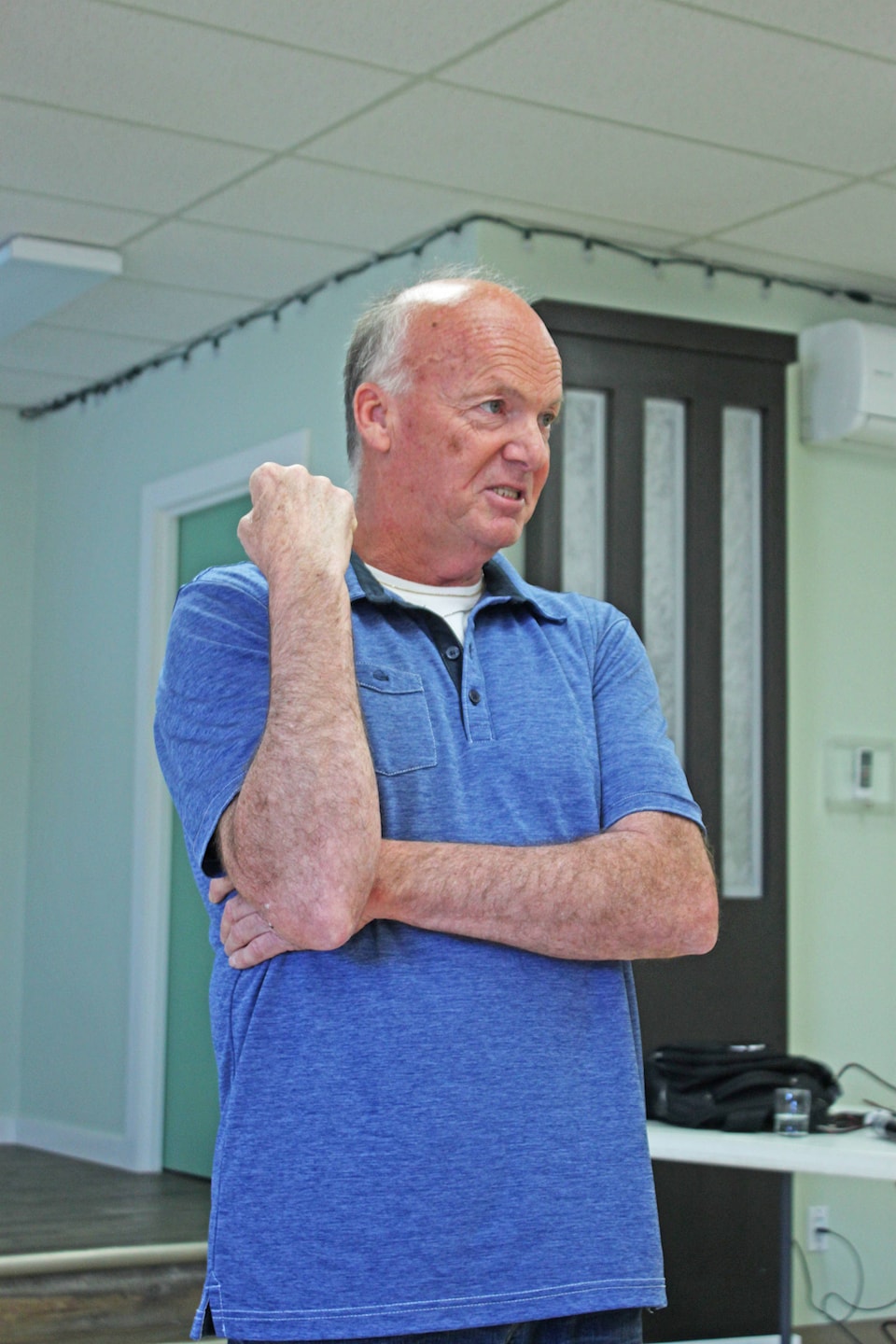A broken leg doesn’t sound like an injury that could be life changing, but if you’re out in the bush or not within easy access of an ambulance, it could be.
Roger Harris, B.C. Forest Safety Ombudsman, was the speaker at last Wednesday’s Chamber of Commerce monthly lunch meeting, described not one but two such cases that led to the amputation of the broken leg when so much time had passed after the injury occurred that nothing else could be done to save the life of the afflicted.
And both could easily have had a less sad conclusion if only an available helicopter had been employed to transport the injured person to a hospital which could deal with the hurt in an effective manner.
Helicopters were available but policies did not allow them to be used.
Harris has recently completed a study of Helicopter Emergency Services. It was at first driven by worker-related issues but became more relevant to remote community issues such as declining population and challenges in attracting investment.
Harris has been an MLA and a cabinet member representing the riding of Skeena. He feels that the under-servicing of the vast majority of B.C. communities is a conscious choice that has been made by government officials.
He feels that health care is a cornerstone of how a community will attract new investment and residents.
“There are lots of stories where the time is too long to effectively treat the situation. The first hour is critical regardless of where you live. The decision not to provide service is a choice by the government,” he said.
The use of Helicopter Emergency Medical Service (HEMS) is mainly used to transport critically ill people between medical facilities as opposed to bringing those people into the hospital in the first place.
Why not use helicopters which are not part of the HEMS system one may ask. Regulations actually do not allow such transportation.
Harris feels that fixing the system would not be all that complicated or expensive. For example, faster initial care would mean lower overall health care costs. In the case of the broken legs, a $1,500 helicopter evacuation would eliminate almost all of the rehabilitation costs associated with getting those individuals back to regular lives and their jobs. A missing leg means a tremendous amount of post-injury care to someone who has to learn how to live with only one lower limb, retraining for a new job, ongoing care with prosthetics and the list goes on.
Almost all of the new funding that has been put into the health care system has gone into the large urban areas. These areas already have access to full-time emergency services and specialists.
“As the distance to the nearest medical facility increases in remote communities, the access to HEMS should be enhanced, not reduced,” said Harris.
And he believes the attitude of urban dwelling officials does not help.
“I came out of a meeting about this issue with some of the government officials in charge and I was almost fuming. The attitude was that if I lived away from the major centers, I should expect to have less service,” he said.
Policies do not take into account the reality of non-urban life. For example, a 20-kilometre ride by ambulance in a city will invariably be on paved and well-maintained roads to the hospital. That same distance in a rural area could be over very bumpy, non-paved roads that many people would not want to take their SUV on — if there are roads, that is. How about a broken leg on a ski hill?
Harris had a number of recommendations that he wants the government to consider. He feels that the rural portion of the province could be serviced by a fleet of six to eight helicopters. Not one in every single community, but a fleet that communities would share.
The scope of first responder responsibilities also needs to be expanded so that then can move a patient more efficiently, according to Harris. At the present time, a patient can only be moved by an employee of the BC Ambulance service. There is a “good Samaritan” regulation but Harris feels it would be unnecessary if the law was changed.
Many people are unaware of the reason why helicopter developer Igor Sikorsky put so much time and effort into developing the first workable model. When asked why he needed money, he replied that the helicopter would save lives.
It’s first combat mission was to evacuate wounded soldiers during the Second World War. And many of us know about the movie and TV show MASH, which featured those flimsy choppers during the Korean conflict.
Harris feels that if people were to know that the health care access that is available in rural communities is of the same standard that urban dwellers expect and receive, there would be less of a drain on human resources and more new residents attracted to go with those new industries and investment.
